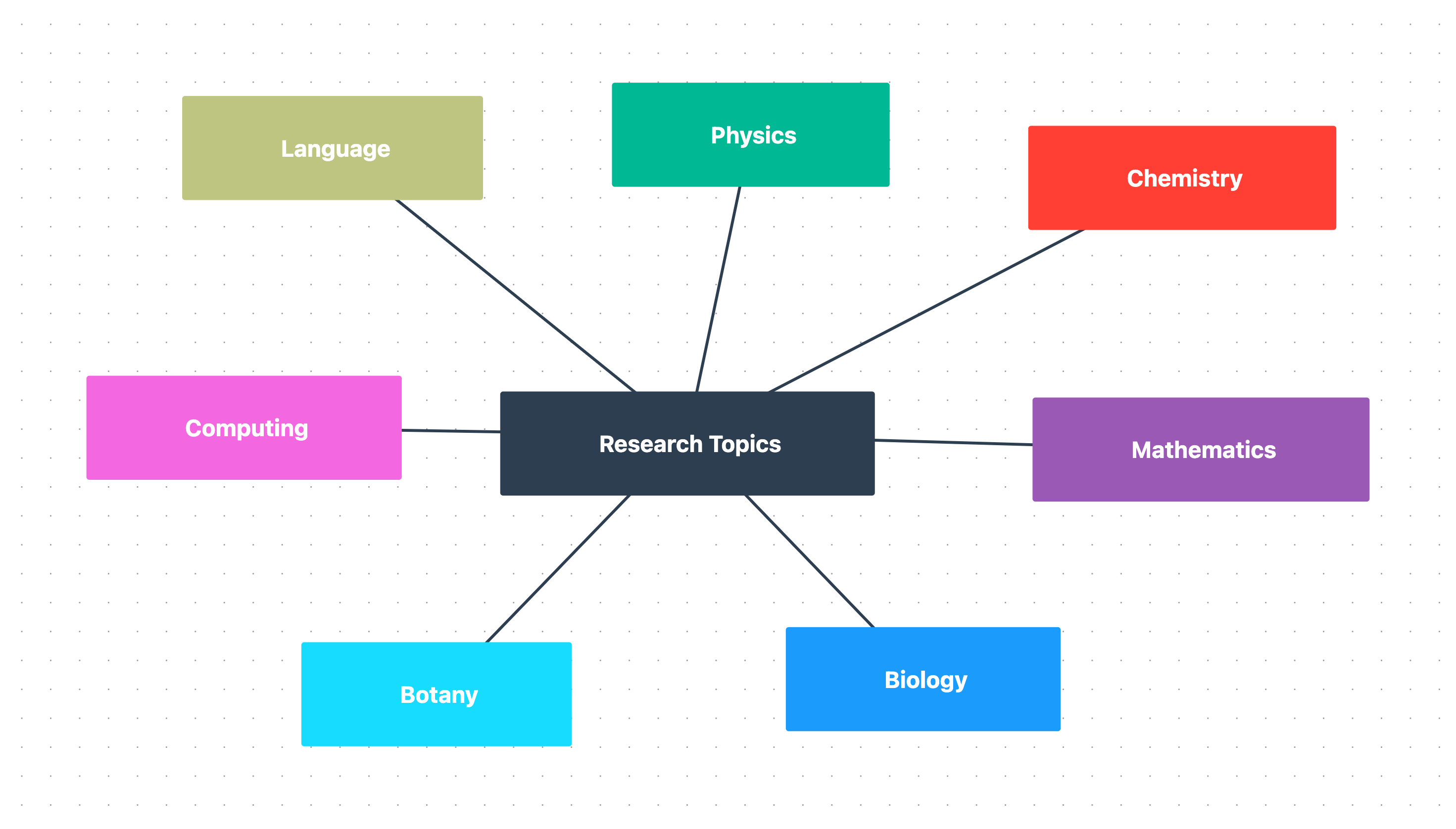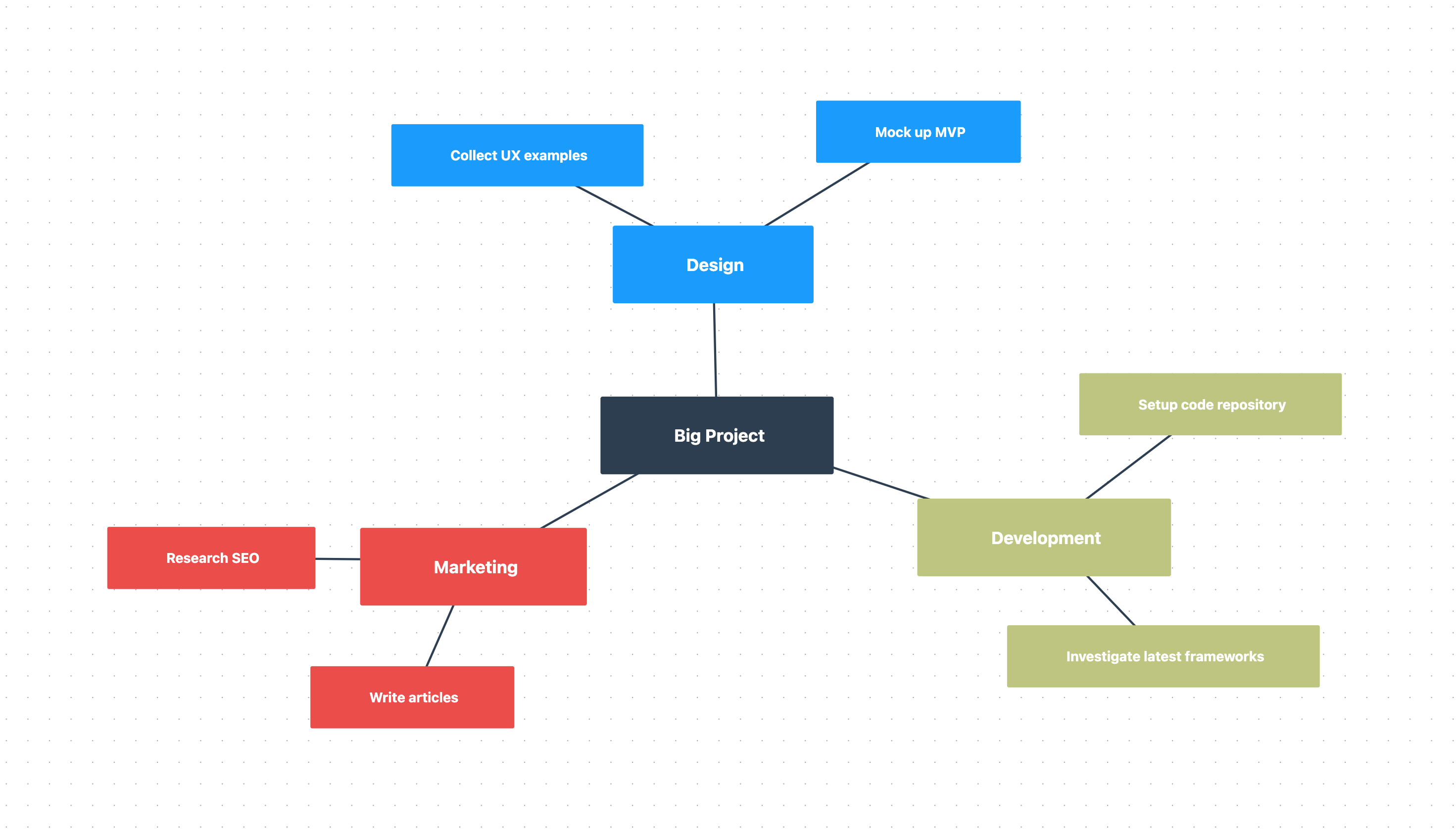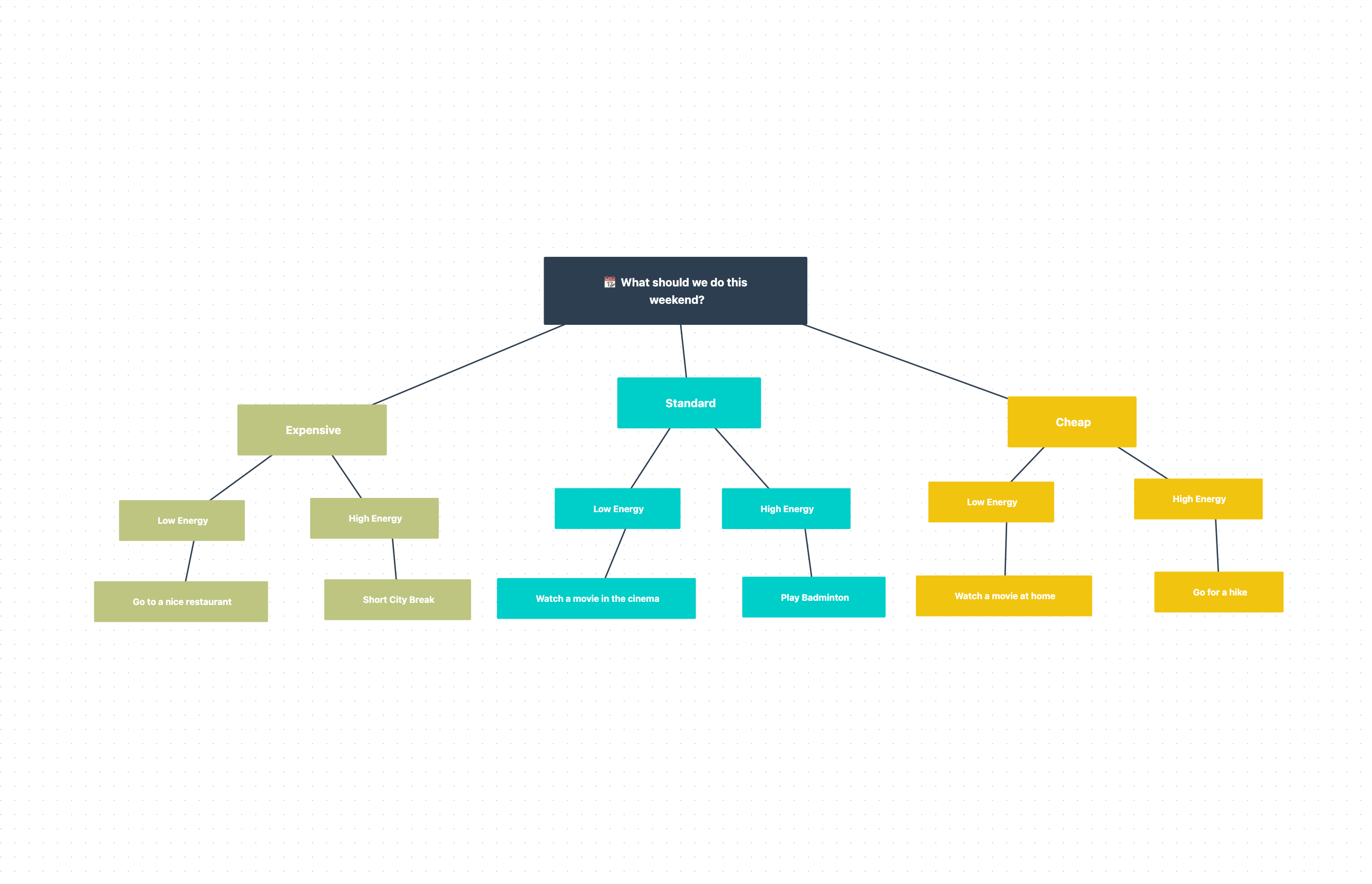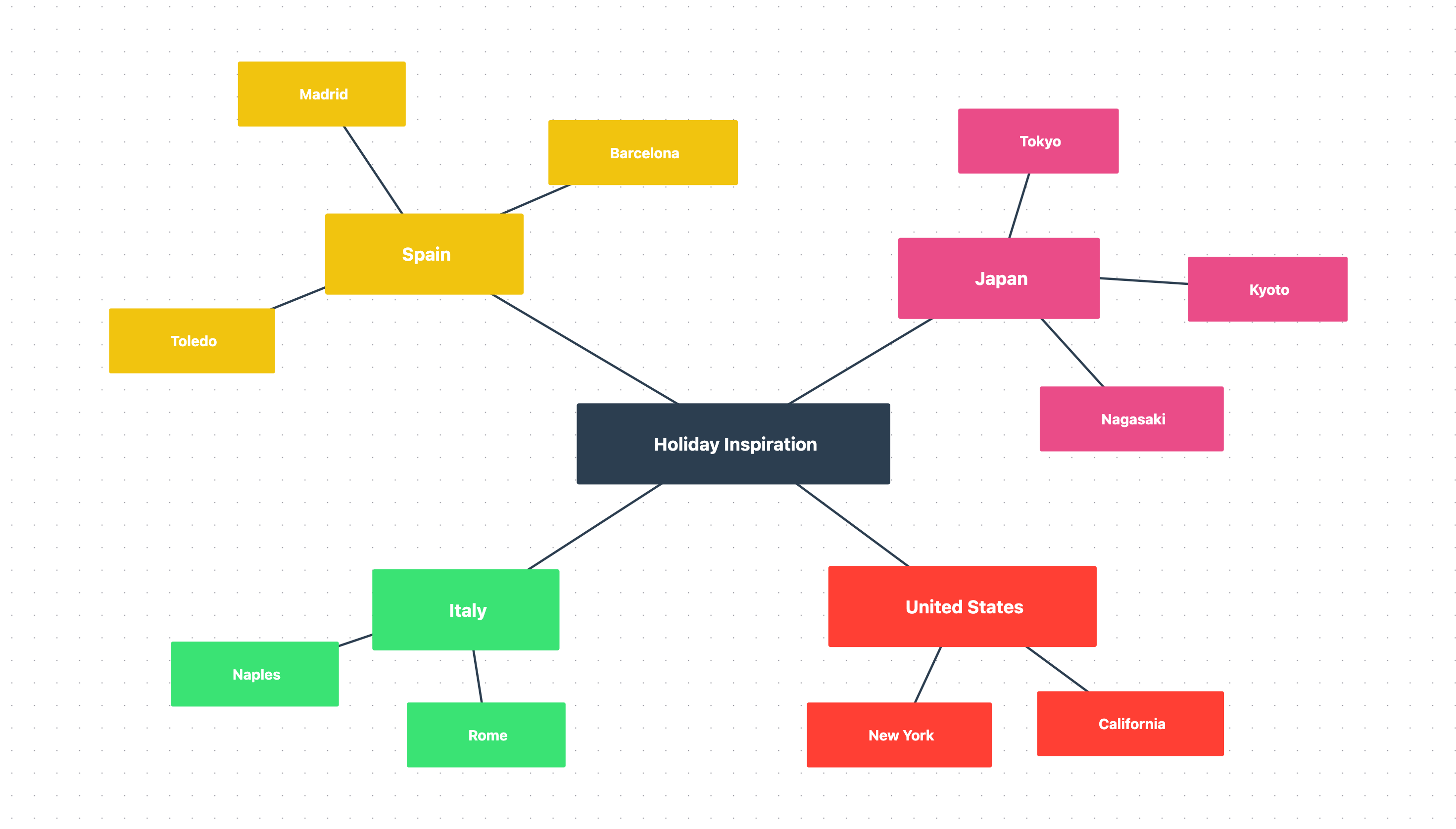What is a thought map?
A thought map (also known as an idea map or mindmap) is a popular way to brainstorm ideas, concepts or to organise your thoughts, making complex ideas more manageable.
At its essence, a thought map is a visual representation of ideas, concepts, or tasks, arranged around a central theme or topic. Picture a network of connected nodes, each representing a different aspect of an overarching idea, creating a web of information that lends itself to the way our brains work.
For instance, consider using a thought map to outline the structure of a project: at the core, you have the main objective, with branches extending outward to cover various tasks, resources, and potential challenges.
For a deeper dive into the practical applications of thought maps, explore some of these articles:
- https://www.wrike.com/blog/what-is-a-mind-map-how-to-create/
- https://www.mindmanager.com/en/features/thought-map/
- https://www.mural.co/blog/mind-mapping
Thought map examples
The applications for thought maps are limitless, but here are a few examples of what you can use thought maps for.
Map out areas of research

Outline the structure of a project with the high level tasks that are needed in each area

Use it as a decision tree

Plan where you want to go on holiday

Using Simple Mindmap to create thought maps online for free
There’s a lot of thought map software or thought map generators online, but it couldn’t be easier to get started using Simple Mindmap.
Although the tool is called Simple Mindmap, thought maps and mindmaps are actually the same thing so you can use our tool to create thought maps for free, without needing to download anything or signup.
Simply head over to the homepage, and click “New Mindmap” to get started. If you get stuck, you can read our how to guide for a walkthrough.